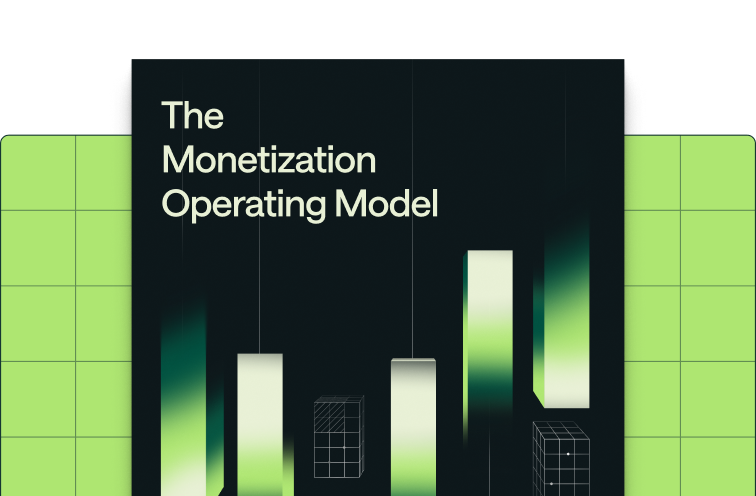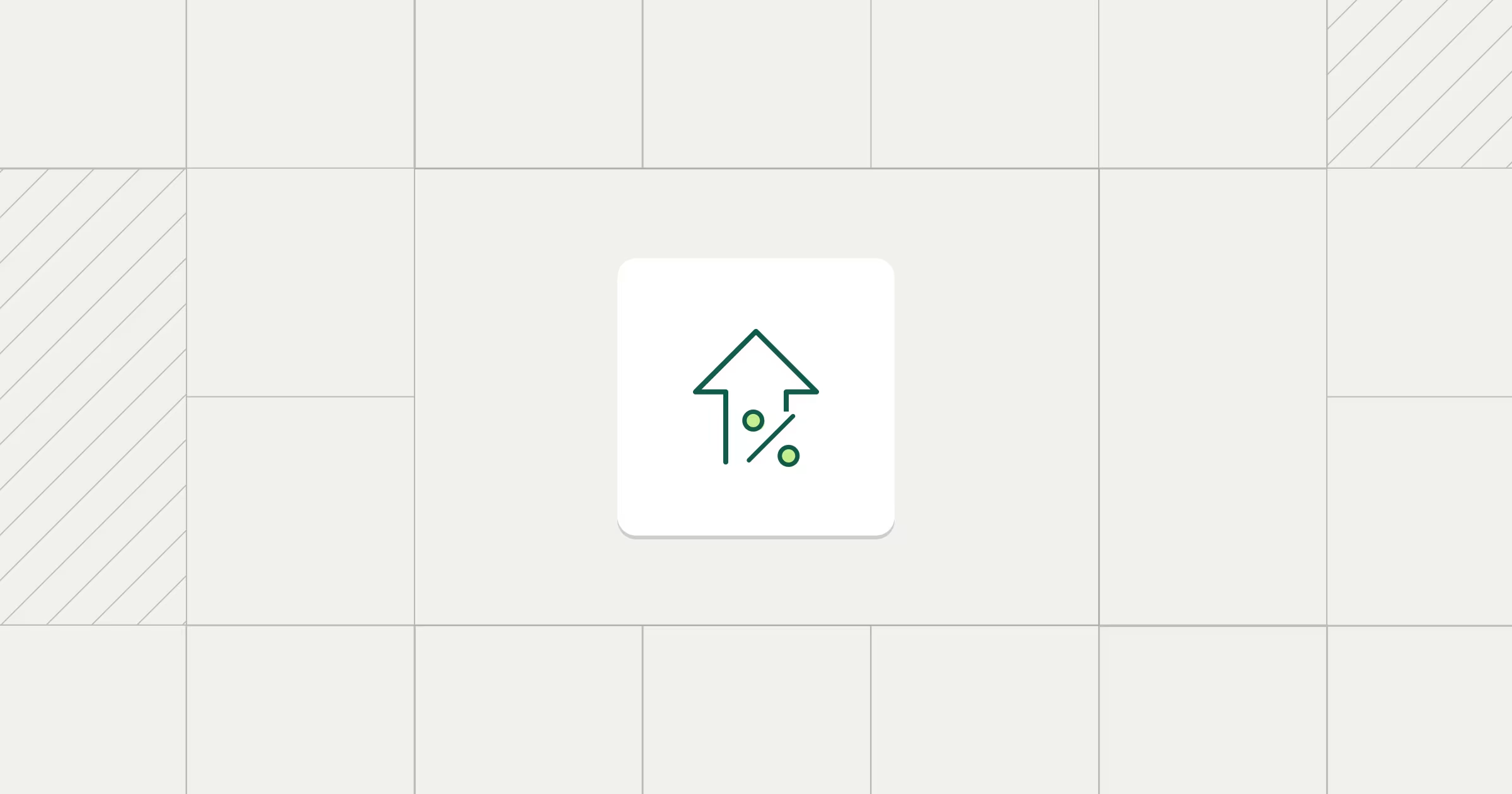Share
Most companies run dozens of pricing models, not one. One customer might pay by seat, another by usage, and a third through a hybrid model combining both---all for the same product.
This isn't a pricing strategy problem. It's a revenue operations reality.
Modern software creates value through multiple channels simultaneously. Your CRM might charge seats for user access, usage for AI features, and outcomes for automated workflows. Your data platform might combine storage subscriptions with compute usage and success fees for insights delivered.
The explosion of hybrid models has transformed revenue operations from managing simple subscription billing into orchestrating complex pricing systems where multiple models coexist within single customer contracts.
Companies that master this complexity turn it into competitive positioning. Those still managing it through spreadsheets and manual processes find themselves fighting their own infrastructure instead of growing revenue.
Modern revenue operations must evolve from basic billing management to systematic monetization orchestration across all business functions.
{{widget-monetization-whitepaper}}What RevOps looks like in today's monetization landscape
Revenue operations has evolved from managing predictable subscription cycles to coordinating dynamic pricing systems that span multiple value delivery channels.
Traditional RevOps focused on linear subscription billing where customers paid fixed amounts monthly or annually. Modern products deliver value through platform access, consumption patterns, and outcome delivery---requiring different pricing approaches within the same customer relationship.
Everyone touches pricing, but no one owns the system
The fundamental challenge facing modern RevOps teams is fragmented ownership. Pricing decisions live in product until finance needs a forecast. They live in go-to-market until engineering needs to meter usage. They live in RevOps until someone has to explain them to a customer.
This fragmentation creates operational chaos when pricing models interact. A customer's subscription includes 1,000 AI credits monthly, but they consume 5,000. The overage should trigger additional charges and invoices, but the system can't handle the hybrid calculation automatically. Finance manually adjusts invoices while engineering builds custom logic and customer success explains the unexpected charges.
After analyzing dozens of companies struggling with this challenge, we've found a core truth: RevOps must become the connective tissue that coordinates value definition, packaging, delivery, and measurement across the business.
Without systematic processes and unified infrastructure, coordination means constantly firefighting. Instead, you have to be able to inform one stage of your RevOps organization to another throughout the process in real-time.
Modern RevOps coordinates six stages continuously
Effective revenue operations in hybrid environments operates through an integrated workflow that never stops running.
• Define Value. Product teams identify measurable value units that customers care about: API calls that power applications, documents processed automatically, or workflows completed without human intervention.
• Instrument Usage. Engineering teams implement real-time tracking infrastructure that captures consumption events, attributes them to customers, and maintains accuracy across billing periods.
• Price & Package. Business teams configure pricing rules that translate usage into revenue through tiered rates, volume discounts, and hybrid models combining subscription and consumption elements.
• Billing & FinOps. Finance teams generate invoices, recognize revenue, and maintain compliance while handling variable consumption patterns and complex contract terms.
• Forecast & Report. Leadership teams predict revenue growth, track performance metrics, and communicate business health when traditional subscription forecasting methods break down.
• Iterate. Cross-functional teams test new pricing approaches, measure customer response, and improve monetization based on real usage patterns and competitive feedback.
Each stage depends on data and decisions from others. Changes cascade through the entire system, requiring coordination that most companies handle manually rather than systematically.
Why modern revenue operations are critical for business success
Effective revenue operations in hybrid pricing environments directly impacts competitive positioning, customer retention, and revenue growth by enabling rapid pricing iteration and cross-functional alignment.
Speed creates market differentiation
Companies with modern monetization infrastructure respond to market changes faster than those managing pricing through manual processes. While competitors spend months coordinating pricing changes across disconnected systems, leading companies test new models and deploy successful approaches in real-time.
OpenAI's revenue operations team is a prime example. They "went from spending hours each month managing invoicing in Excel to making changes in minutes in the Metronome UI." This operational efficiency translates directly into competitive responsiveness and faster revenue improvement.
The speed differential compounds over time. Companies that can iterate pricing monthly rather than quarterly run more experiments, gather more market feedback, and improve monetization faster than competitors constrained by manual processes.
Revenue leakage prevention drives growth
Modern RevOps prevents systematic revenue loss that occurs when pricing complexity overwhelms operational capabilities. Common leakage sources include aggregated consumption pools where usage attribution fails, lack of overage enforcement allowing customers to exceed limits without billing, and manual reconciliation errors that compound monthly.
Leading companies track every revenue opportunity through automated systems. Usage triggers billing automatically. Contract commitments enforce minimum spend. Pricing changes propagate consistently across all customer touchpoints without manual intervention.
Operational efficiency enables scaling
DataStax's transformation illustrates the operational impact of modern RevOps infrastructure. Their manual reconciliation process required "2 people and 5+ days of demanding work to finalize" monthly book close. Automated systems reduced this to "2--3 hours" while improving accuracy and enabling real-time revenue visibility.
This efficiency gain frees RevOps teams from manual tasks to focus on strategic initiatives like pricing improvement, competitive analysis, and expansion revenue capture. Teams spend time growing revenue instead of reconciling spreadsheets.
The engineering and operational costs of inadequate revenue operations infrastructure
Poor RevOps infrastructure creates massive hidden costs through engineering overhead, operational inefficiencies, and missed business opportunities that most companies don't measure until they become unsustainable.
Engineering teams build billing instead of product
Custom billing systems require dedicated engineering resources to maintain pricing logic, usage pipelines, and billing edge cases. These engineers debug revenue-critical systems, build invoicing workflows, and field customer disputes about billing accuracy rather than developing competitive product features.
The technical debt spiral accelerates when revenue risk makes billing code untouchable. Engineers avoid refactoring because "nobody wants to be the person who broke revenue." Billing logic spreads throughout the codebase. Edge cases multiply with each new pricing model or customer exception.
Every sprint spent maintaining custom billing systems is a sprint not spent building competitive differentiation.
Manual processes don't scale
Companies outgrow manual RevOps processes faster than they expect. Spreadsheet-based pricing management works for simple subscription models but breaks when hybrid pricing creates dozens of rate variations, customer-specific terms, and usage-based calculations that change monthly.
Manual reconciliation between systems creates operational bottlenecks that slow month-end close, delay customer billing, and prevent real-time revenue visibility. Finance teams spend days reconstructing revenue numbers from disparate sources instead of analyzing performance and improving growth.
The breaking point arrives when manual processes can't keep up with business growth. Customer complaints about billing accuracy increase. Revenue recognition becomes complex and time-consuming. Pricing changes require weeks of coordination across multiple teams and systems.
Missed opportunities compound
The biggest cost is strategic: companies with inadequate RevOps infrastructure can't capture expansion revenue opportunities, test new monetization approaches, or respond quickly to competitive moves.
Pricing experimentation becomes impossible when changes require engineering sprints and cross-team coordination. Companies stick with suboptimal pricing because improvement is operationally expensive rather than technically challenging.
Market opportunities disappear when companies can't deploy new pricing models quickly enough to capitalize on changing customer needs or market positioning. Revenue growth stagnates not because products lack value, but because monetization systems can't capture it effectively.
The 7 essential capabilities every modern RevOps system needs
Successful revenue operations in hybrid pricing environments requires seven integrated capabilities that work together as a unified system, not isolated tools.
These capabilities transform pricing from an annual planning exercise into continuous improvement that adapts to market conditions, customer feedback, and product evolution.
1. Self-serve pricing capabilities
Product teams must launch new pricing without engineering tickets or IT dependencies. This means business-friendly interfaces for configuring rate tiers, volume discounts, and hybrid models through APIs or visual tools rather than code changes.
Self-serve capabilities reduce time-to-market from months to minutes. Product managers can test AI feature pricing, adjust usage tiers, or create promotional rates without waiting for engineering sprints or risking system stability through custom development.
The infrastructure separates pricing logic from product code, enabling rapid iteration while maintaining system reliability. Changes deploy safely with rollback capabilities and performance monitoring that prevents billing disruption.
2. Safe pricing experimentation infrastructure
A/B testing pricing changes requires the same discipline as product feature experiments: controlled rollouts, statistical significance measurement, and rapid iteration based on customer response.
Effective experimentation infrastructure supports cohort-based testing where different customer segments see different pricing approaches simultaneously. Teams can measure conversion rates, expansion revenue, and churn patterns to improve pricing based on real behavior rather than assumptions.
The system enables progressive rollouts that start with small customer segments and expand based on performance data. Failed experiments roll back automatically without affecting broader customer relationships or revenue recognition accuracy.
3. Governed, systematized pricing logic with full auditability
Centralized rate card management eliminates spreadsheet chaos while maintaining proper governance and change control. All pricing decisions flow through unified systems with approval workflows, version control, and complete audit trails.
Rate cards become the single source of truth for customer pricing across all systems. Changes propagate automatically to billing, sales tools, and customer dashboards without manual synchronization or reconciliation errors.
Governance capabilities include pricing approval workflows that match organizational decision-making processes, automated compliance checking that prevents pricing errors, comprehensive audit trails that track every change with timestamps and ownership attribution, and version control systems that document who modified rates, when changes took effect, and business rationale for each adjustment.
This prevents unauthorized discounting, supports compliance requirements, and enables rapid troubleshooting when pricing issues arise while ensuring systematic control over all pricing logic throughout the organization.
4. Direct connection between value measurement and billing
Usage tracking connects directly to billing systems without manual reconciliation or batch processing delays. Every API call, workflow completion, or outcome achievement triggers billing calculations in real-time with customer attribution and period accuracy.
This capability eliminates revenue leakage from disconnected systems where usage data lives separately from billing logic. Customers see charges that reflect actual consumption patterns without delays or discrepancies that create disputes.
Integration works through event-driven architectures where product usage triggers billing events automatically. The system handles high-volume ingestion, duplicate detection, and retry logic to ensure billing accuracy without manual intervention.
5. Visualization and communication of product value
Customer-facing dashboards help users understand usage patterns, predict costs, and control consumption to maximize value while controlling spend. Transparency builds trust and reduces support burden from billing questions.
Effective visualization shows real-time usage tracking, spending trends over time, and predictive billing based on current consumption patterns. Customers can set spending limits, receive usage alerts, and understand exactly what they're paying for before invoices arrive.
This capability focuses specifically on external customer communication and transparency, helping users optimize their consumption behavior and build confidence in variable pricing models through clear, accessible interfaces that connect usage to value delivered.
6. Transition support for hybrid models
Modern products require multiple pricing approaches within single customer relationships. The infrastructure must handle subscription foundations with usage overages and credit systems without creating operational complexity.
Hybrid model support includes contract-aware billing that respects minimum commitments while capturing usage beyond included amounts, automated credit allocation and consumption tracking, and flexible invoicing that clearly explains all pricing components on unified bills.
The system manages pricing transitions as customer needs evolve from simple subscriptions to complex consumption patterns. Grandfather clauses, migration workflows, and contract versioning preserve customer relationships while enabling pricing improvement.
7. Unified pricing and usage data platform with shared visibility
All teams work from the same pricing data with automatic consistency across systems rather than managing conflicting sources and manual reconciliation processes.
The unified platform maintains consistent object models across CRM, billing, and reporting systems so customer data, pricing rules, and usage attribution remain synchronized automatically. Changes in one system propagate everywhere without manual updates or reconciliation overhead.
This eliminates fragmented pricing views and ensures pricing data consistency across all business functions. Integration architecture maintains real-time synchronization so usage events captured in the product flow automatically to billing systems, customer dashboards, and revenue recognition without manual intervention or data transformation errors.
Shared visibility means sales teams see current usage patterns when negotiating renewals, customer success teams monitor consumption health scores, and finance teams generate accurate forecasts based on real adoption trends rather than subscription assumptions alone.
The RevOps path forward
Revenue operations transformation from simple billing to hybrid pricing orchestration requires systematic infrastructure investment, organizational changes, and treating monetization as a continuous discipline rather than a one-time setup.
Three-phase transformation approach
After working with companies across dozens of verticals to make this transformation realtor them, three phases consistently emerge for successful implementation.
Phase 1: Stabilize foundation - Establish central rate cards and usage instrumentation that provide consistent pricing data across all systems. Eliminate manual reconciliation between billing, sales, and product analytics systems that create revenue leakage and operational overhead.
Phase 2: Scale through infrastructure - Implement modular billing architecture that decouples pricing from engineering deployments. Business teams can configure new pricing models, adjust rates, and deploy changes without technical dependencies or development cycles.
Phase 3: Enable continuous experimentation - Build systematic testing capabilities where teams can experiment with pricing approaches, measure customer response, and deploy successful changes without operational risk or manual coordination overhead.
If you're able to execute this well, you're set up to build a new, stable basis to rapidly adjust your pricing and revenue models without the effort.
Infrastructure investment as competitive foundation
Companies that successfully transform their revenue operations recognize that modern monetization infrastructure creates capabilities that compound over time through faster pricing iteration, better customer experiences, and reduced operational drag.
The investment enables strategic capabilities including entering new market segments by creating custom pricing models rapidly, responding to competitive threats by adjusting rates instantly, and capturing expansion revenue as it happens rather than through annual contract renegotiation.
Success metrics include reduced time-to-market for pricing changes, improved billing accuracy and customer satisfaction, increased expansion revenue capture through better usage visibility, and reduced engineering overhead for billing maintenance and support.
Organizational evolution supports infrastructure
Technology alone doesn't solve monetization complexity. Companies must evolve organizational structures, decision-making processes, and success metrics to support hybrid pricing operations effectively.
This evolution includes establishing clear ownership for monetization strategy and execution, implementing cross-functional coordination processes that prevent siloed decision-making, and creating feedback loops that connect pricing performance to customer success and competitive positioning.
The most successful transformations treat monetization as a core business discipline requiring dedicated leadership, systematic processes, and continuous improvement rather than a technical implementation project with defined endpoints.
Companies that successfully modernize their revenue operations infrastructure transform pricing complexity from an operational burden into a competitive growth engine that scales with business success and market evolution.
{{widget-monetization-whitepaper}}










